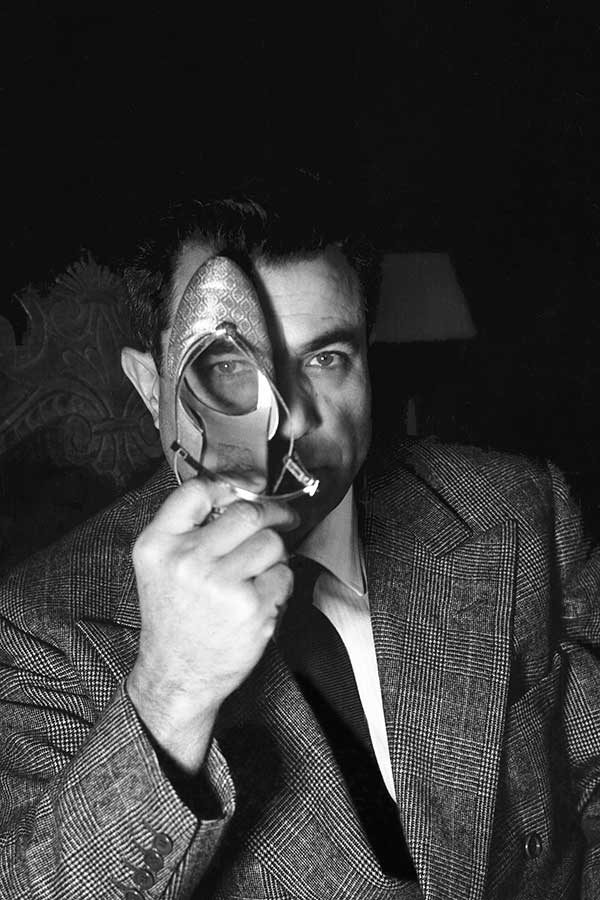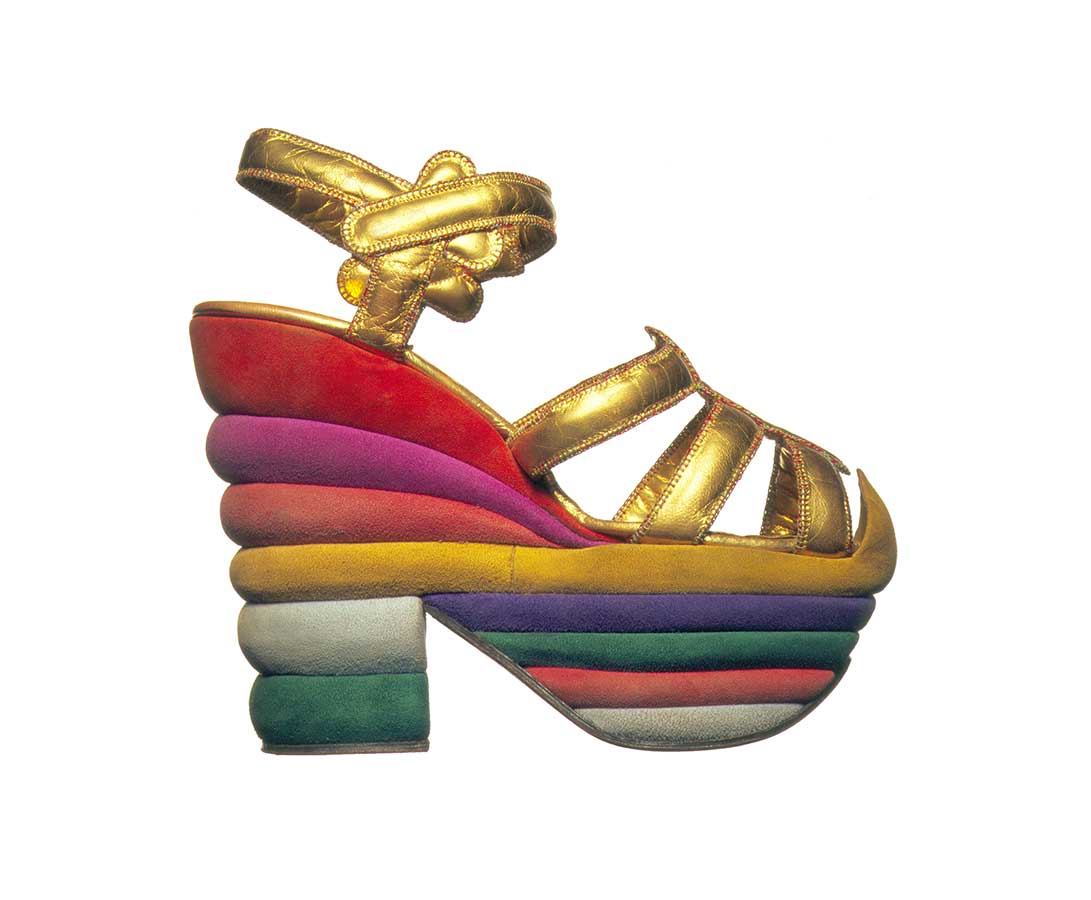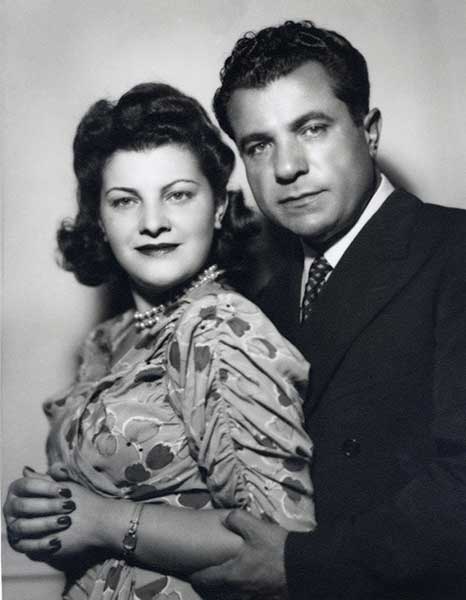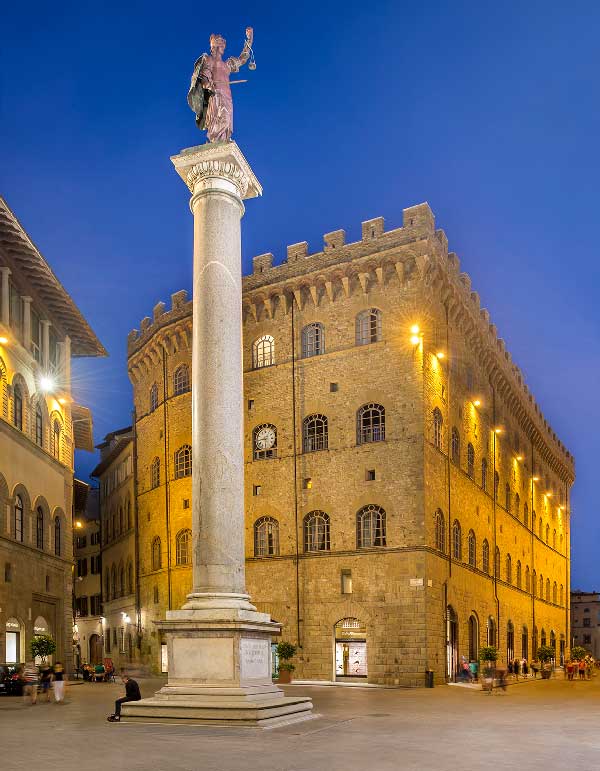Interview with Giovanna Gentile Ferragamo - FB

Language Selector
FLORENCE BIENNALE
18 - 26 OCTOBER, 2025
Fortezza da Basso
Viale Filippo Strozzi 1, Florence FI
Opening to the public Saturday 182 pm
Office hours:
- From Monday to Friday9 am to 5 pm
- Saturday and SundayClosed
CustomWidgetTemplate
Interview with Giovanna Gentile Ferragamo
In the ’20s, Salvatore Ferragamo moved to California, where he started working for the film industry: what can you remember from that period?
Some milestones characterise my father’s story in California: his departure from Italy in 1915; the third-class trip across Astypalaia to reach his elder brothers who left a few years earlier for North America; his transfer to Santa Barbara in California, where he decided to join two of his brothers, Alfonso and Secondino and, with them, open a bespoke repair shop.
It was for this store that his partnership with the world of cinema began, especially with some of the most famous directors of the time, David Wark Griffith, James Cruze, Raoul Walsh and Cecil B. DeMille; for their films, my father made the shoes for main actors and extras, earning the praise of the good Californian society. Within a few years, he became a “shoemaker” and a “shoedesigner”, as the American press call it, quickly achieving fame and notoriety. Also, when the film industry moved from Santa Barbara to Hollywood, he followed it by opening a new store on Hollywood Boulevard, the Hollywood Boot Shop, frequented by the most celebrated stars of the time: Mary Pickford, Pola Negri, Charlie Chaplin, Joan Crawford, Lillian Gish and Rodolfo Valentino, with whom he established relationships, not only regarding work, but also with friends and daily acquaintances.
Those years in California were intense years of experimentation and innovation which my father brought back with him when he returned to Italy in 1927 as essential experience.

Ferragamo revolutionised women’s footwear by creating a product that would later become the company’s iconic piece: the sandal. How did you come up with this idea?
The Rainbow sandal, of course! Those were hard years of autarchy, when my father, an active craftsman, started to make his most creative shoes: driven by the need to find alternative materials, he discovered cork, produced in Italy, as a valid ingredient for expression. Thanks to his inventiveness that he had already gained during his experience in America, cork became the core of the heel of the Rainbow sandal, created for Judy Garland in 1938.
That iconic sandal was therefore a symbol of an era and its originality is still evident and, dare I say, not exceeded.
From then onwards, the sandal was developed in various shapes and using other materials, I must also mention the Invisible Sandal, with its upper created using braided fishing line, which had recently arrived in Italy in the 1940s. It is a sandal with which, in 1947, my father won the Neiman award, along with Christian Dior, who was awarded during the Haute Couture ceremony.

What are the strengths of the Ferragamo collections?
Continuous research and willingness to combine Italian craftsmanship, quality of materials and innovation, in order to create typical luxury Made in Italy products. Each item reinterprets the creative codes of our tradition with contemporary spirit.
Following the death of Salvatore, Wanda Ferragamo took over the company: how did she manage her husband’s demanding legacy? What was the Ferragamo family’s role in this new phase of the company’s development?
The company’s success was unstoppable in those years. However, in 1960, unfortunately, my father left us, leaving my mother alone, with the responsibility of having to care, not only for the family, but also for the business. After his death, my mother did not think twice about taking over the company at just 39 years of age, with no experience and with six young children. Despite her inexperience and the time of grief and mourning, she proved to have an exceptional attitude as a businesswoman, by continuing to bring success to the company that my father had founded 33 years earlier, in 1927. My mother did not just keep the legacy alive, but personally contributed to it by causing the business to take a major leap into the world of fashion. Under her guidance, thanks to her intelligence and business strategy, with the help of all of us, her children, all engaged in the company from a very early age, the company went from being a mere footwear manufacturer to also becoming a ready-to-wear clothing and accessories manufacturer, establishing itself as a symbol of Italian fashion in the world.
Her commitment to the company never failed over the years and, in fact, she continued to contribute to it until her death, unconcerned by her 96 years if age and certain of her managerial abilities. Her unquestionable qualities as president of the company has earned her numerous national and international awards, such as the “International Woman of the Year” award in 1982; also, in 1987, she was nominated Order of Merit of the Italian Republic and, in 1995, she awarded “Honorary Officer of British Empire” by the Queen of England. What everyone remembers about my mother is her strength in the face of the harshness of life and, undoubtedly, her foresight in business, which led the Ferragamo brand to reach its 91th year of profitable business.

In May 1995, the Ferragamo family museum was inaugurated: would you like to talk to us about this project and how it is developing?
The Ferragamo Museum, since its foundation, has been considered as a true corporate tool, capable of transmitting and interpreting the brand’s tangible and intangible values, starting from its history and from the research subjects inspired by the life of its founder. Over the years, the mission of the cultural institution has evolved and, in parallel with the transmission of the fairy tale of the “shoemaker of the stars” and his shoes, the idea arose to refer to the world of art around the museum, creating new cultural products based on the interaction of Ferragamo values and contemporary artistic expressions. The factors that led to the institutional growth of the museum and the invention of successful and modern cultural products include the transition from a museum with a permanent collection and to a museum institution where temporary exhibitions are set up. The organisation of exhibitions is followed by attention to new partnerships with other cultural institutions, thus offering off-site exhibitions and conventions on specific themes that involve many artists and personalities from the art industry. The museum also carries out intense educational activity for every age, in partnership with the Ferragamo Foundation. In fact, it organises workshops where participants are called to interact with the story of the “shoemaker of the stars”, with the aim of raising awareness of the values of craftsmanship and making participants the key players of a unique cultural experience.
For the company, the museum institute and archive are two workshops where its history is investigated and traditional items are experimented upon, giving life to new creations, prototypes and models, whilst respecting the principles of the brand. The archive and museum are also essential elements of interaction with the region, as centres for promoting the cultural debate and as dynamic elements for external and internal training.

Are there points of contact between design and contemporary art? What are they?
Yes, absolutely. It often happens that those who deal with design love art and, sometimes, are even artists. Contemporary art is the maximum expression of contemporary times and design always tends to accompany it by adding and giving functionality to artistic expression.
On the occasion of the XII Florence Biennale, Salvatore and Wanda Ferragamo will be awarded the International “Leonardo da Vinci” Award for design in fashion. How do you feel about this?
My brothers and I are happy to be able to collect this wonderful award and it makes us even more proud of our parents who have done so much with their work and dedication, not only for us, their children, to whom they have transferred their strong attachment to work, for the family and all the essential values that enable us to move forwards together every day and make us capable of facing daily challenges, but also for all the people who have always worked with us and who are a priceless asset and it is also thanks to them that many wonderful goals have been achieved to date.
What relationship does the Ferragamo family have with Florence, the city that Salvatore chose as his company’s main headquarters?
Salvatore Ferragamo was established and grew in Florence, gaining notoriety and impetus from the local cultural environment. Whilst Renaissance art and Florentine artistic heritage represented inexorable sources of inspiration for the shoes designed by my father, today, we, as a family and company, are actively engaged in the protection and restoration of certain symbols of the city, amongst which I like remembering the refurbishment of eight rooms at the Galleria degli Uffizi, dedicated to the Second Florentine period of the fifteenth century and the restoration of the Neptune fountain in Piazza della Signoria. We like to define our support of cultural activities in Florence and the restoration of certain architectural assets, a virtuous partnership between the public and private sector and a thanks from our family to the city and to the intense association created by my father that still continues today. Everything that we have achieved over the years is therefore a way of expressing our gratitude to Florence for what it has given us.